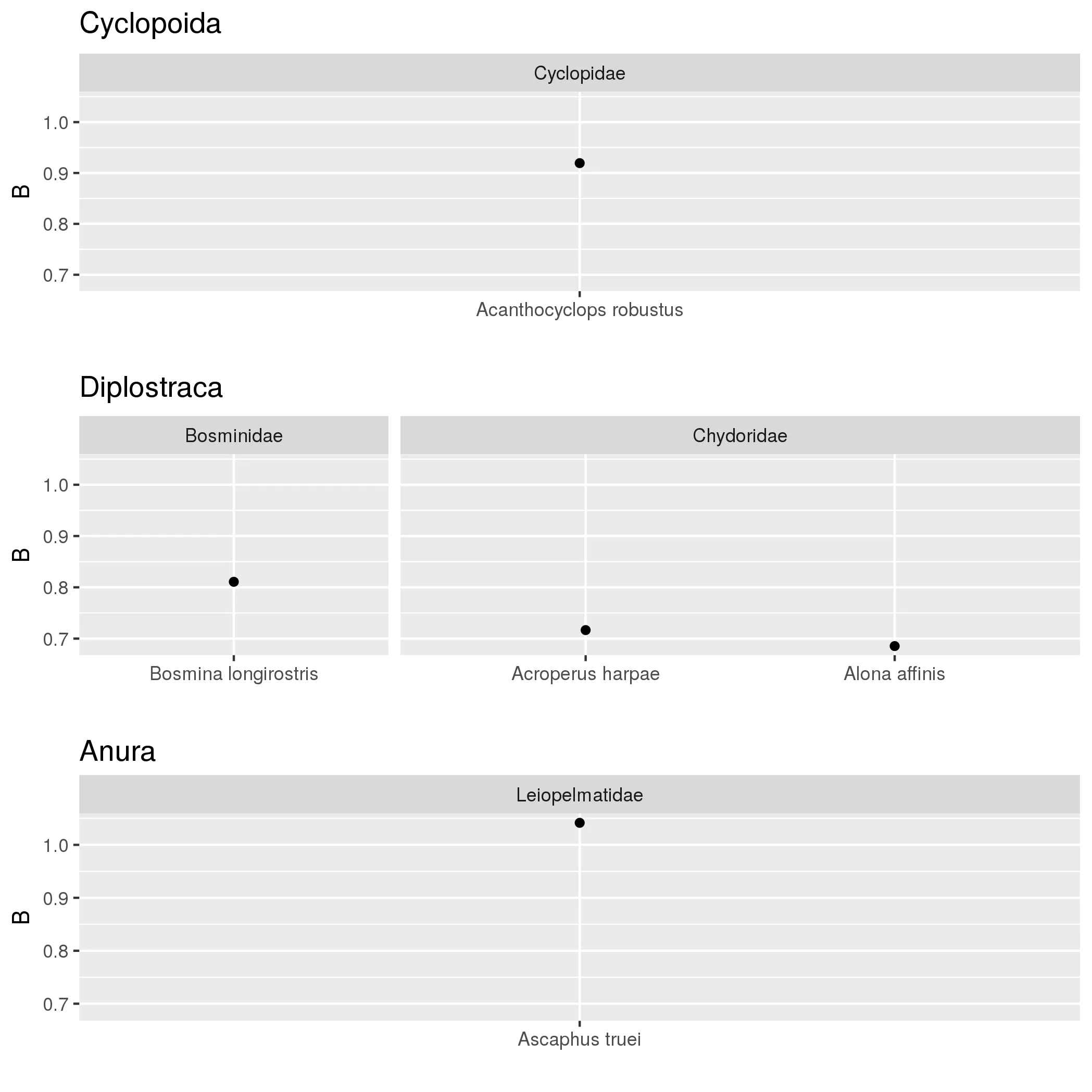如果我有一个嵌套因素,在这种情况下,我有多个“家庭”级别包含在因素“订单”中,我希望可能创建一个
基本上,每个订单需要一个带有该订单内每个家族的所有条带的条带。我知道facet_grid(Family / Order ~。)目前是不可能的,但我该如何实现这种效果?可以使用theme()吗?非常感谢。--SB
我应该在上面指定Family和Order都是因素。数据值B是属于具有家族水平和订单水平的物种。这是我的绘图代码:
facet_grid(Family / Order ~.)
现在应该改为
facet_grid(Family + Order ~.)
基本上,每个订单需要一个带有该订单内每个家族的所有条带的条带。我知道facet_grid(Family / Order ~。)目前是不可能的,但我该如何实现这种效果?可以使用theme()吗?非常感谢。--SB
我应该在上面指定Family和Order都是因素。数据值B是属于具有家族水平和订单水平的物种。这是我的绘图代码:
p <- ggplot(models, aes(B,Species)) + geom_point() + facet_grid(Family + Order ~
.,scales="free",space="free")
这里是一些示例数据:
structure(list(Species = c("Acanthocyclops robustus", "Acroperus harpae",
"Alona affinis", "Ascaphus truei", "Bosmina longirostris"), Intercept = c(-36.1182388331068,
-27.2140776216155, -25.7920464721491, -39.2233884219763, -31.4301301084581
), B = c(0.919397836908493, 0.716601987210452, 0.685455190113372,
1.04159758611351, 0.81077051300147), Bconf = c(0.407917065756464,
0.181611850119198, 0.254101713856315, 0.708582768458448, 0.234313394549538
), Order = c("Cyclopoida", "Diplostraca", "Diplostraca", "Anura",
"Diplostraca"), Family = c("Cyclopidae", "Chydoridae", "Chydoridae",
"Leiopelmatidae", "Bosminidae")), .Names = c("Species", "Intercept",
"B", "Bconf", "Order", "Family"), row.names = c(NA, 5L), class = "data.frame")


facet_grid(Order ~ Family)为什么不能给你想要的输出结果。 - emhart